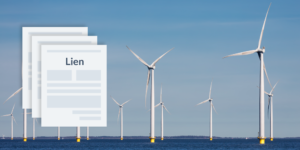
Coastal waters outside New York, Maine, Virginia, and several other states now have leases available for the wind energy industry to bid on and develop. However, due to the location of these projects being outside of state borders, determining payment rights per project can be complicated.
Recently, a circuit court in Maryland denied a mechanics lien claim made against US Wind by Intermoor Inc. in the amount of $4,817,993 after deeming it had no jurisdiction in property outside its borders.
The inability for contractors like Intermoor to obtain unpaid fees on offshore projects that have unclear legal jurisdictions could have broad implications for the Biden Administration’s plans to build more wind farms off the coast of many US states. Secretary of the Interior Deb Holland hopes the currently planned farms will create tens of thousands of jobs, bring in nearly 12 billion dollars a year in capital investments in such projects, and power up to 10 million homes.
One of the newest wind projects in the US includes South Fork Wind, which is the first of five being developed in the state of New York. Another wind project scheduled to break ground next year, Sunrise Wind, will have the capacity to produce 924 megawatts of energy. The combination of these five projects together will produce over 4,300 MW of energy and is currently the most ambitious plan of action made by any state in the US.
Since these projects are located many nautical miles off the coasts of these states, there are some concerns over where to go if a contractor must submit a mechanic’s lien. Intermoor Inc. has recently run into trouble in trying to find what jurisdiction has the power to help them retrieve $4,817,993 in unpaid costs for materials, transportation, and labor.
The basis of Intermoor’s case is that the state adjacent to the project’s property is Maryland, that state lien laws can be applied as federal surrogate laws, and that federal maritime law cannot be applied of its own force without the authority of the state of Maryland. The representation for Intermoor claims that the Outer Continental Shelf Lands Act (OCSLA) gave them sufficient cause to enforce a lien against US Wind, the plaintiff in this case.
The circuit court of Worcester County Maryland — the closest county to the wind farm project and where the petition was filed — disagreed with Intermoor’s claim. Neither in the Maryland code, nor in the Maryland constitution stipulating the power of the circuit court, did the circuit court find any legal basis to enforce a lien on US Wind.
The court’s opinion stated, “We discern no basis in this clause of the Maryland Constitution for a circuit court to exercise jurisdiction over property located beyond the border of the county in which the court sits.”
Intermoor then went on to reference the case of Union Texas Petroleum Corp. v. PLT Eng’g, Inc, where a mechanics lien was successfully made in a federal court using Louisiana law according to the OCSLA.
In the case of public offshore projects, contractors can take advantage of payment bonds to secure payment.
“On public projects [state or federal] over a certain contract value threshold, a general contractor will be required to post a payment bond to secure any claims for non-payment,” says construction attorney Alex Benarroche.
His advice to contractors: Secure a copy of the payment bond early on and pay close attention to your claim deadlines to ensure you get paid what you’ve earned.
The circuit court stated that this case made no mention of the state’s power to provide relief to a contractor and operate outside its legal boundary. According to the Worcester County circuit court, the primary problem of Intermoor’s argument and use of this case is that “it confuses choice of law with fundamental jurisdiction.”
In addition to the goals of building turbines being hindered by numerous supply chain and labor shortage issues, confusion and frustration on payment rights when seeking such damages could hinder the White House’s goal to avoid 78 million metric tons of CO2 emissions by 2030 by moving closer to fully wind powered communities.
